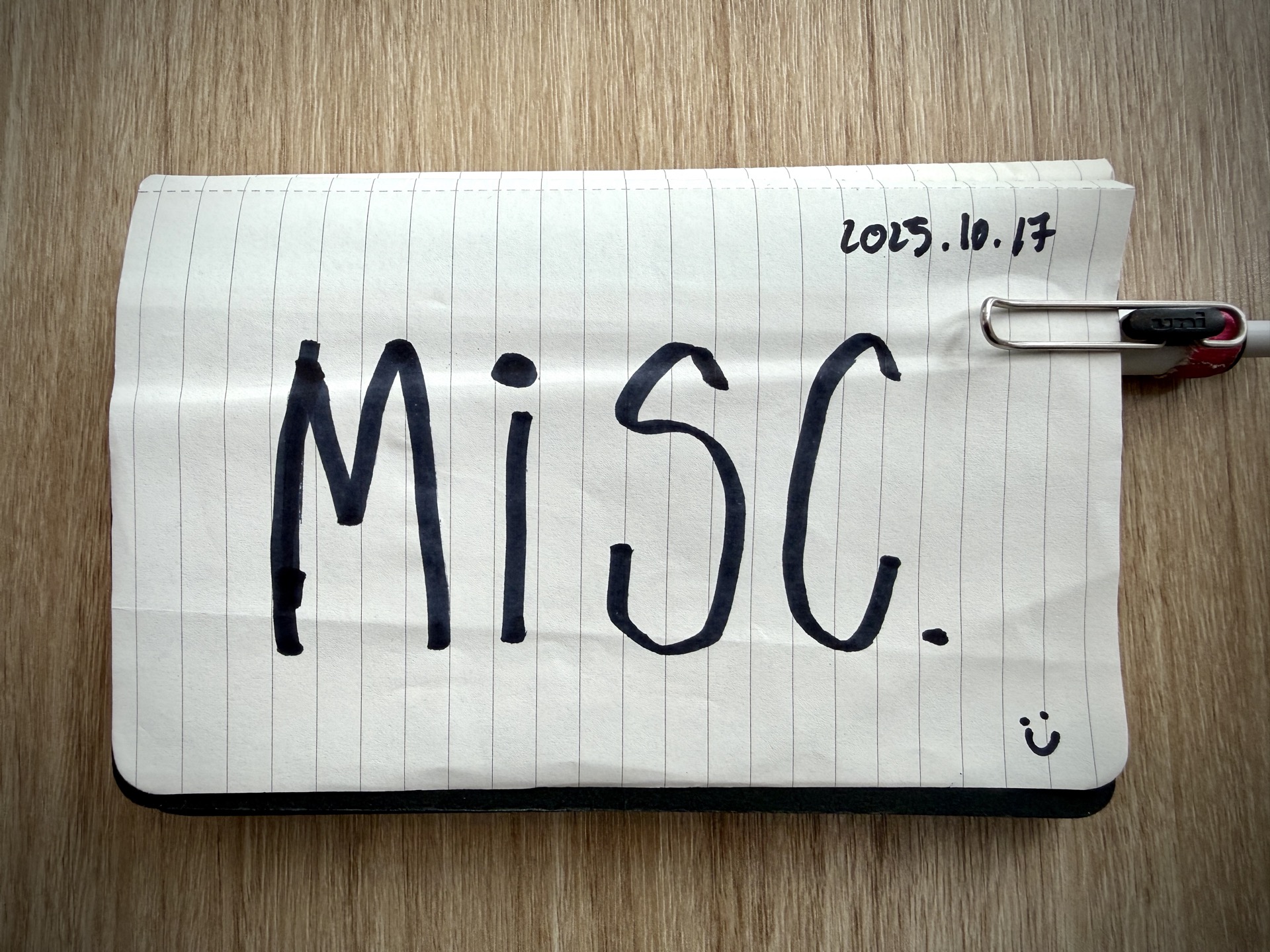For all the systems I’ve built — digital, physical, mental — one of the most important lessons I’ve learned is to embrace the philosophy of the miscellaneous.
The Misc. The others. The “tmp.”
“Misc” is the necessary shadow side.
The part that lets the rest of your organization system not only shine but survive.
Subtle
Once upon a time, I remember spending far too long trying to craft the perfect organization system for my stuff.
No miscellaneous allowed, I said to myself! Everything must have a home.
And at first, it worked. The office things went in the office area. All the cables, chargers, and adapters went in the tech bins. Obviously.
But the obvious is not where the Misc lives. It never does. It hides in the subtle — in the little gaps that only appear after you think you’ve sorted it all out.
What about that collection of mismatched ballpoint pens you’ve somehow acquired — hotel pens, conference pens, the one that came free with your desk calendar? You can’t throw them away. They still work. But you’ll never actually use them either. They’re not your daily pens.
What about the loose screws from that IKEA shelf you built three years ago?
Or the telescoping phone mount you bought to film top-down shots for one specific project, now standing like a forgotten totem in the corner of your office?
Where do these go?
(For the record: I’m literally staring at that mount right now.)
Cracks
These odd little objects — each one is a hairline crack in your perfect system.
An opened half-bag of multi-coloured balloons from a party you barely remember, now crashing your grid of neatly labelled bins.
(Besides throwing it out entirely) you really only have two choices:
- Rebuild the system to absorb the anomaly.
- Surrender, make a space called “Misc,” and dump it with the other misfits.
Because perfection doesn’t scale. Maintenance does.
I’ve done this more times than I can count — both in physical and digital spaces.
And for me, that constant dance of “Where does this go?” sits at the heart of organization. It’s detailed decision-making through everyday objects. A mental walkthrough of every drawer, folder, and directory you’ve ever made. A stranger stress-testing your systems.
It’s exposure. It’s awareness. A reminder that behind every immaculate setup is a broom closet stuffed with everything that didn’t quite fit.
Kit
Van Neistat said it best in his video, 5 Principles of Organization.
Number 2: Kit your sh!t.
He calls these “misc” bins junk drawers.
“The necessary evil twin of kits is junk drawers. Junk drawer chaos preserves your kit’s organizational integrity.”
These are my travel kits. In my backpack, I have three pouches: “Tech Accessories,” “Power Accessories,” and “Power & Charging.”
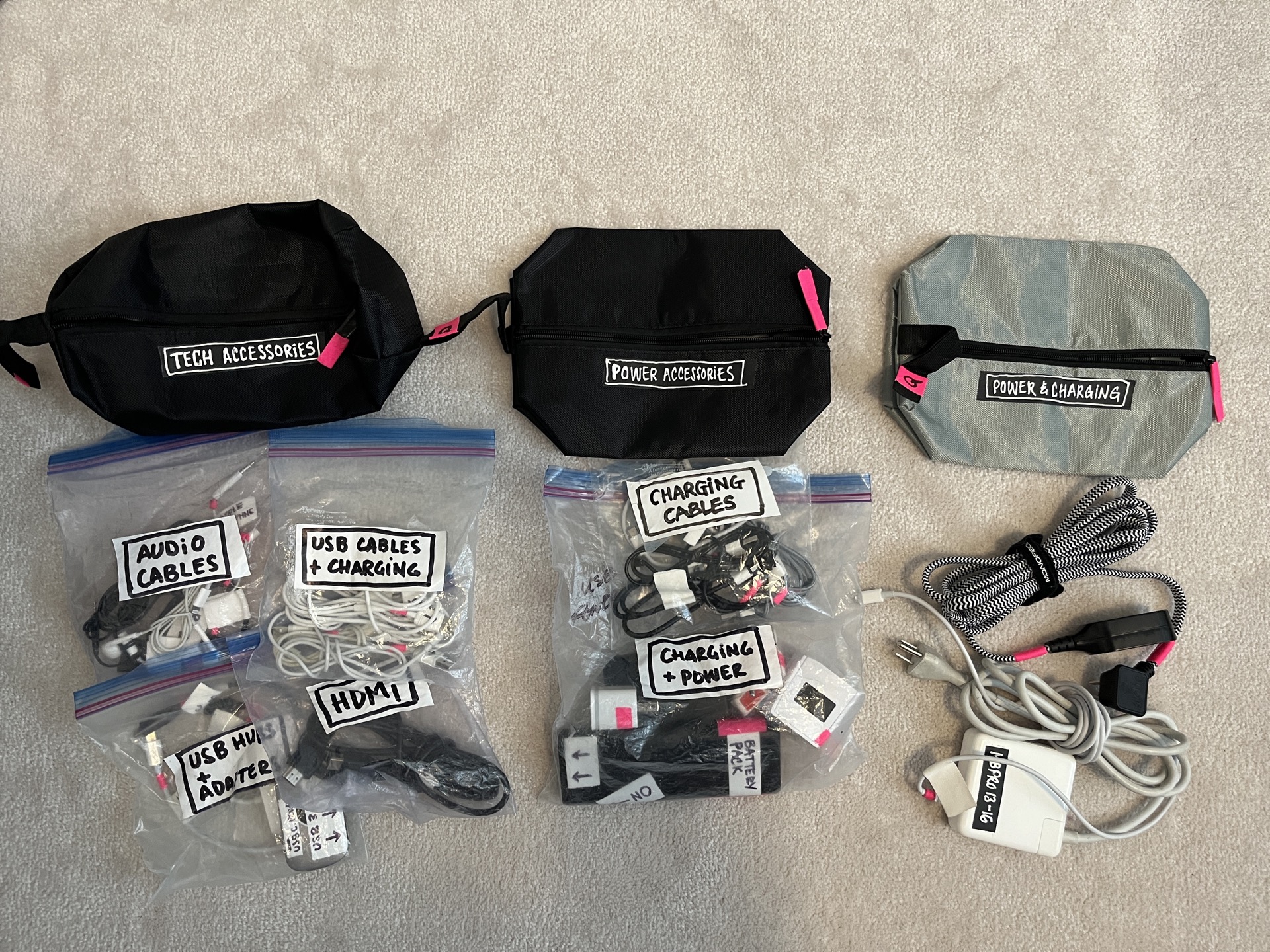
And inside each one? More sub-categories — ziplock bags filled with cables, dongles, and doodads.
Within those kits hides a subtler misc. “Power” and “Charging” overlap. They blur. I haven’t yet reconciled them — and maybe I never will.
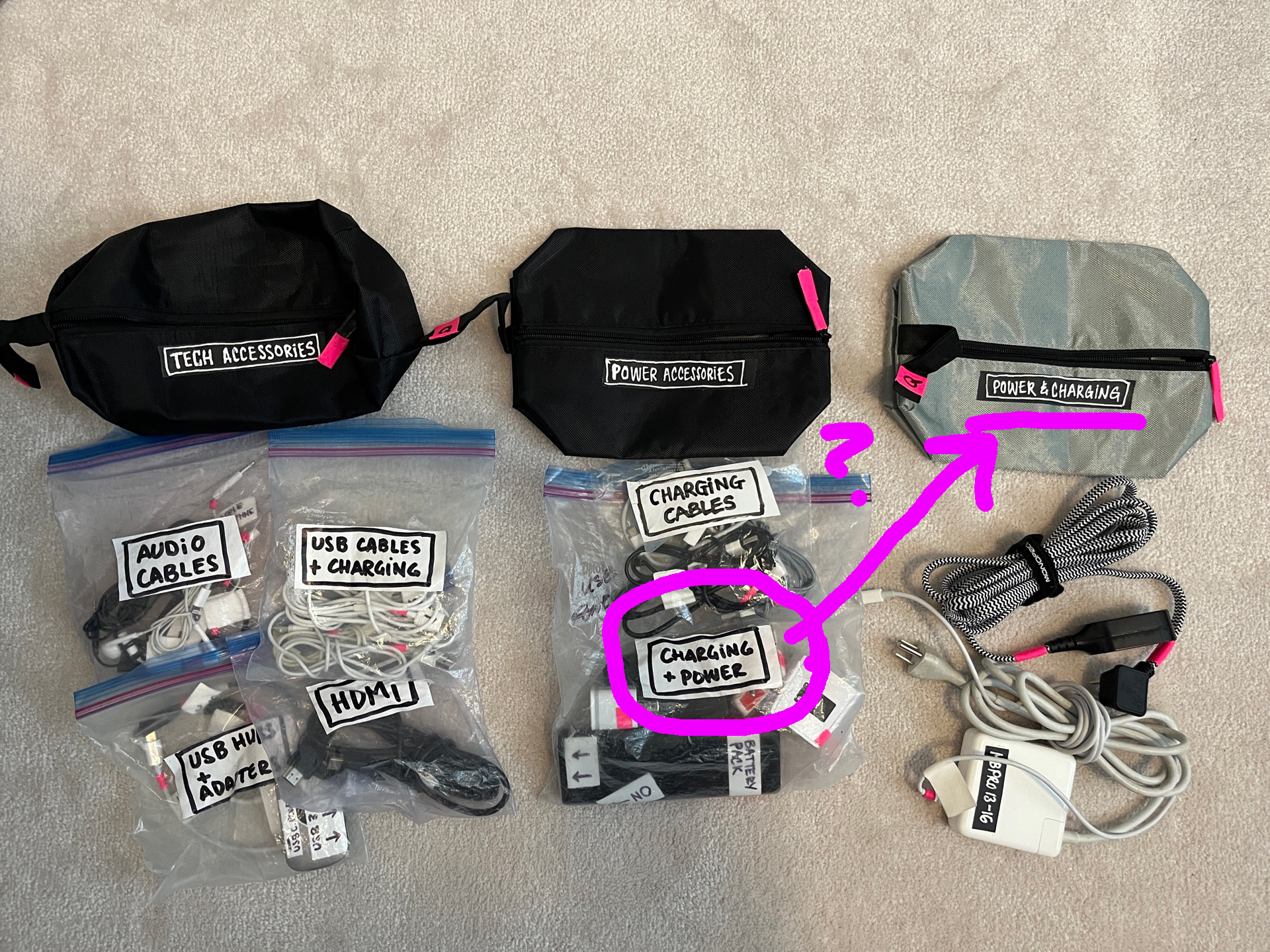
Because, as Van says,
“Junk drawers aren’t always drawers.”
They’re a concept. A permission slip for imperfection. Even the best kits have edges that smudge.
Follow that lineage far enough and you end up at LogJams.
LogJam
“LogJam,” a term popularized by Tom Sachs, describes the same paradox:
LogJam (noun): Things too valuable to throw away, but not valuable enough to restock.
Junk Drawer Mining (verb): Discovering forgotten but valuable resources.
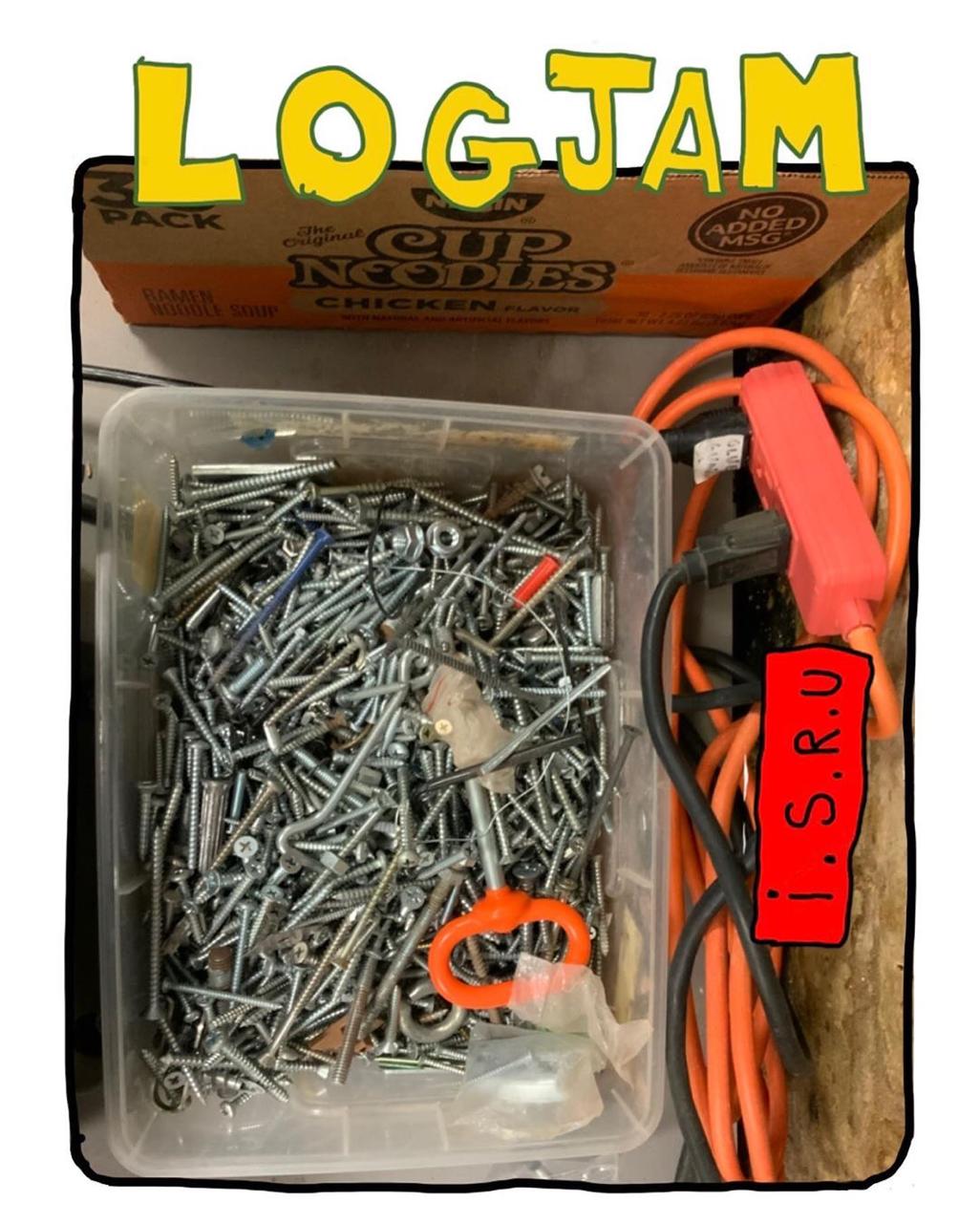
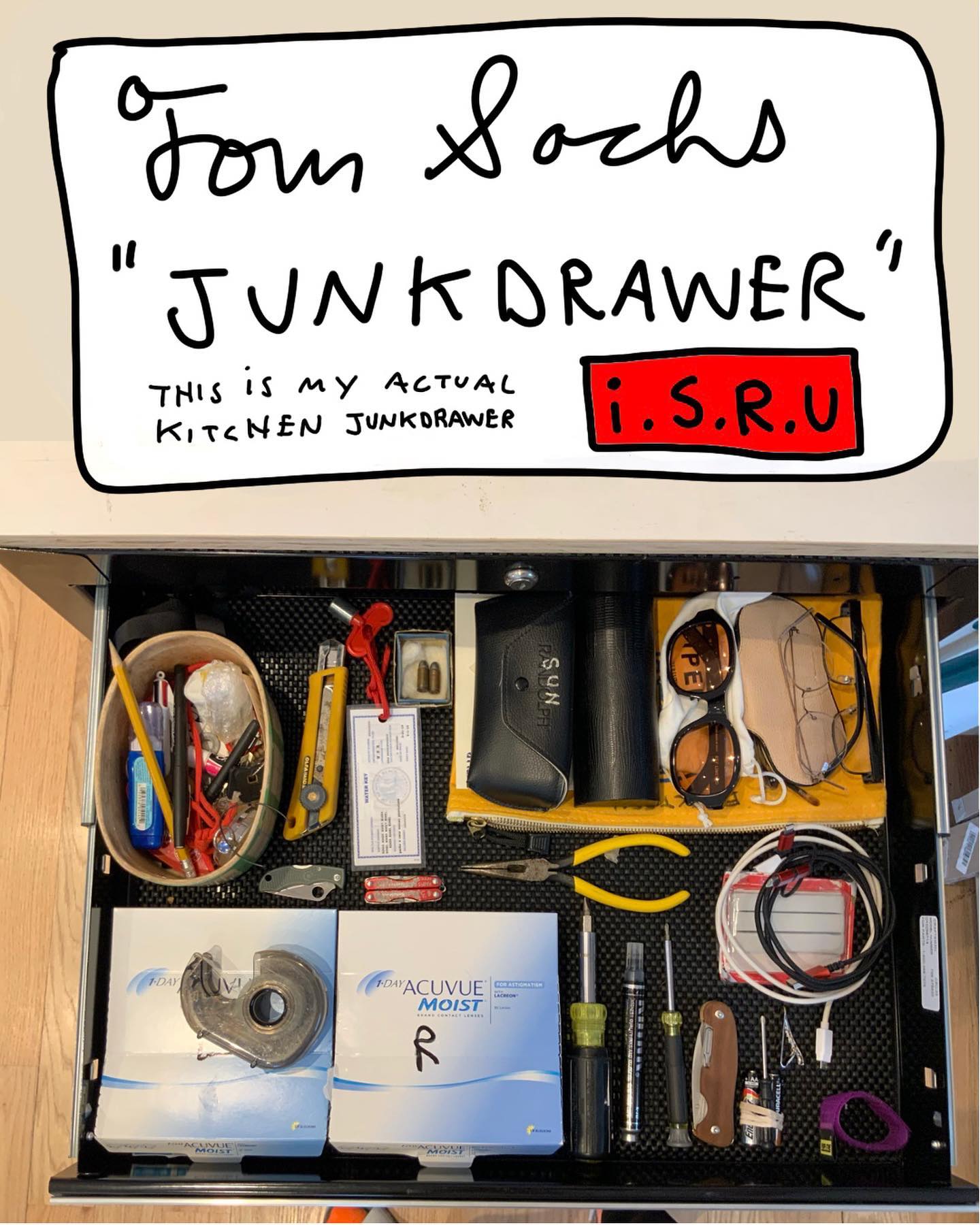
Here’s my own little example — a rack of stationary and semi-active tech cables in my home. I call it the Supply Depot.
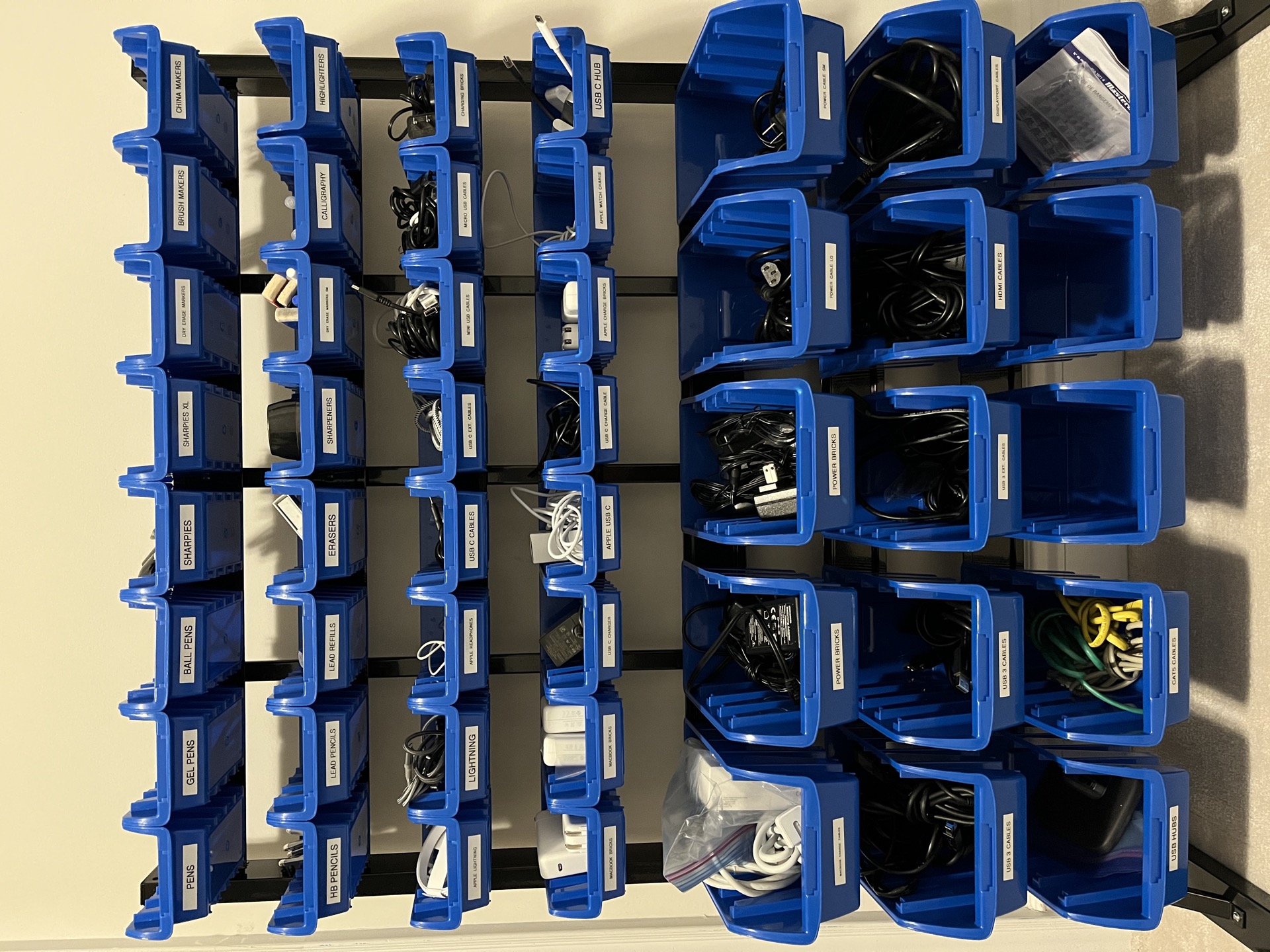
Rows of clearly labelled bins: pens, markers, USB-C hubs, HDMI cables. Everything intentional… except for the bottom bins.
That last one — the one with the “Mastercraft” manual sticking out?
That’s the LogJam.
The line between order and overflow.
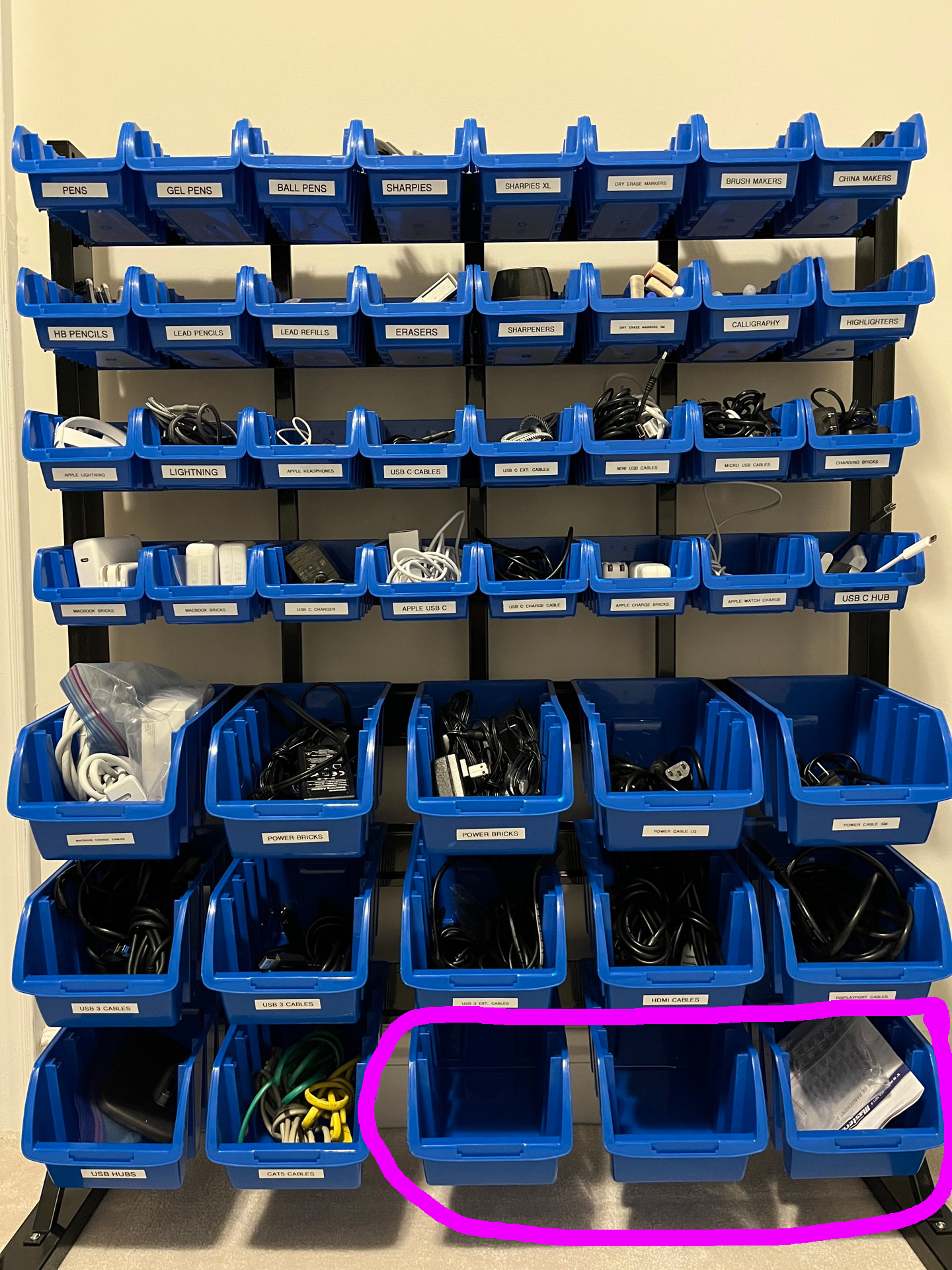
Feedback
Every system eventually frays at the edges — that’s how you learn where it flexes and where it breaks.
Those frays are user research. They tell you how reality actually behaves versus how you imagined it would.
So instead of shaming the junk drawer, study it.
“Misc” isn’t failure. It’s feedback.
It’s your system showing you where life is still happening — where your categories haven’t caught up to reality.
It’s the overflow of experimentation, the tax you pay for doing interesting work.
If everything fits neatly, you’ve stopped growing.
Every misc bin, every logjam, every junk drawer is a quiet survivors — something that stuck around because it still serves a purpose, even if it doesn’t seem to “belong.”
It’s the drawer that refuses to be cleaned out because some part of you knows there’s still value in there.
In the world of systems, the survivors aren’t always tidy. They’re the ones that adapt. They flex. They absorb what doesn’t fit anywhere else.
That’s what “misc” really is.
Not the absence of order — but the presence of resilience.
Because for every structure we build — folders, workflows, rituals — there’s always a hidden pocket of chaos keeping everything else going.
And that pocket? It’s not a mistake. It’s a pressure valve.
Proof that your system is still alive. Changing. Evolving.
